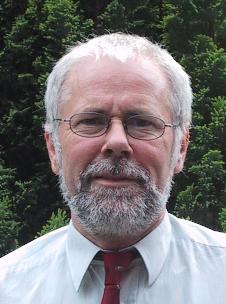 |
KEYNOTE SPEAKER ::
______________________________________________________________
Ronald R. Yager || Michele Sebag || Rudolf Kruse ||
KEYNOTE SPEAKER
Rudolf Kruse (Otto-von-Guericke University, Magdeburg, Germany)

Rudolf Kruse obtained his diploma (Mathematics) degree in 1979 from
University of Braunschweig, Germany, and a PhD in Mathematics in 1980 as
well as the venia legendi in Mathematics in 1984 from the same university.
Following a short stay at the Fraunhofer Gesellschaft, in 1986 he joined the
University of Braunschweig as a professor of computer science. Since 1996 he
is a full professor at the Department of Computer Science of the University
of Magdeburg where he is leading the computational intelligence research
group. He has carried out research and projects in statistics, artificial
intelligence, expert systems, fuzzy control, fuzzy data analysis,
computational intelligence, and data mining. His research group is involved
in various industrial applications. He has coauthored 15 monographs, 18 edited books, as well as more than 340
refereed technical papers in various scientific areas. He is associate
editor of several scientific journals. He is a fellow of the International
Fuzzy Systems Association (IFSA), fellow of the European Coordinating
Committee for Artificial Intelligence (ECCAI) and fellow of the Institute of
Electrical and Electronics Engineers (IEEE).
Abstract
Mining of Temporal Patterns
Every company that is aware of the global competition, ever-shorter production cycles and increasing customer requirements is required to collect data about product reliability or customer behaviour. Due to its temporal nature such data not only represents dependencies, like market changes or the introduction of a competing product, but can also reflect the changes of the underlying domain in general. However, patterns that correspond to temporal change rarely occur out of a sudden. We aim to describe how the results of data mining, models and patterns, evolve over time and suggest a temporal view on the data as well as the resulting patterns. To assess and understand the identified patterns we recommend statistical, template-based and visual approaches. I will give examples of successful industrial applications dealing with different models of incorporating the temporal aspects. Specifically, applications with automobile manufacturers and telecommunication providers will be presented and provide insight into the interest and needs of such pattern mining methods.
|
 |

